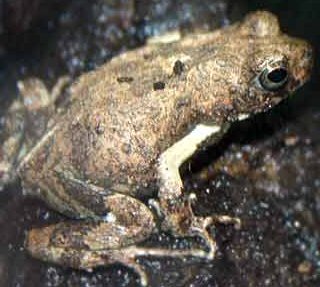|
|
Post Last Edit by chewan at 18-3-2010 15:47
The researchers are finding ways to take energy from the sun andcarbon from the air to create new forms of biofuels, thanks to asemi-tropical frog species. Their results have just been publishedonline in Nano Letters.
Research Assistant Professor David Wendell, student Jacob Todd andCollege of Engineering and Applied Science Dean Carlo Montemagnoco-authored the paper, based on research in Montemagno's lab in theDepartment of Biomedical Engineering. Their work focused on making anew artificial photosynthetic material which uses plant, bacterial,frog and fungal enzymes, trapped within a foam housing, to producesugars from sunlight and carbon dioxide.
Foam was chosen because it can effectively concentrate the reactantsbut allow very good light and air penetration. The design was based onthe foam nests of a semi-tropical frog called the Tungara frog, whichcreates very long-lived foams for its developing tadpoles.
"The advantage for our system compared to plants and algae is thatall of the captured solar energy is converted to sugars, whereas theseorganisms must divert a great deal of energy to other functions tomaintain life and reproduce," says Wendell. "Our foam also uses nosoil, so food production would not be interrupted, and it can be usedin highly enriched carbon dioxide environments, like the exhaust fromcoal-burning power plants, unlike many natural photosynthetic systems."
He adds, "In natural plant systems, too much carbon dioxide shutsdown photosynthesis, but ours does not have this limitation due to thebacterial-based photo-capture strategy."There are many benefits to being able to create a plant-like foam.
"You can convert the sugars into many different things, includingethanol and other biofuels," Wendell explains. "And it removes carbondioxide from the air, but maintains current arable land for foodproduction."
"This new technology establishes an economical way of harnessing thephysiology of living systems by creating a new generation of functionalmaterials that intrinsically incorporates life processes into itsstructure," says Dean Montemagno. "Specifically in this work itpresents a new pathway of harvesting solar energy to produce either oilor food with efficiencies that exceed other biosolar productionmethodologies. More broadly it establishes a mechanism forincorporating the functionality found in living systems into systemsthat we engineer and build."
The next step for the team will be to try to make the technologyfeasible for large-scale applications like carbon capture atcoal-burning power plants.
"This involves developing a strategy to extract both the lipid shellof the algae (used for biodiesel) and the cytoplasmic contents (theguts), and reusing these proteins in the foam," says Wendell. "We arealso looking into other short carbon molecules we can make by alteringthe enzyme cocktail in the foam."
Montemagno adds, "It is a significant step in delivering the promise of nanotechnology."
crdeit : sciencedaily.com  |
|
|
|
|
|
|
|
|
|
|
|

image katak Tungara yang mnjadi rujukan dlm konsep kajian ini~  |
|
|
|
|
|
|
|
|
|
| |
Category: Belia & Informasi
|